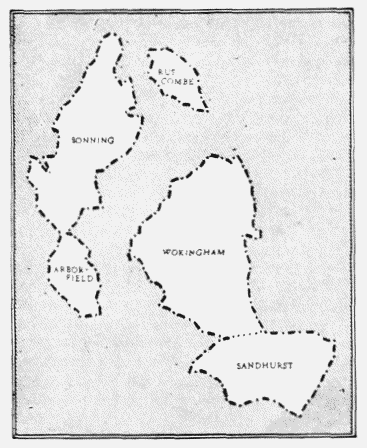A History of the County of Berkshire: Volume 3. Originally published by Victoria County History, London, 1923.
This free content was digitised by double rekeying. All rights reserved.
'The hundred of Sonning: Introduction and map', in A History of the County of Berkshire: Volume 3, ed. P H Ditchfield, William Page (London, 1923), British History Online https://www.british-history.ac.uk/vch/berks/vol3/pp198-199 [accessed 30 April 2025].
'The hundred of Sonning: Introduction and map', in A History of the County of Berkshire: Volume 3. Edited by P H Ditchfield, William Page (London, 1923), British History Online, accessed April 30, 2025, https://www.british-history.ac.uk/vch/berks/vol3/pp198-199.
"The hundred of Sonning: Introduction and map". A History of the County of Berkshire: Volume 3. Ed. P H Ditchfield, William Page (London, 1923), British History Online. Web. 30 April 2025. https://www.british-history.ac.uk/vch/berks/vol3/pp198-199.
THE HUNDRED OF SONNING
CONTAINING THE PARISHES OF
| ARBORFIELD | SONNING with EARLEY, WOODLEY and SANDFORD |
| RUSCOMBE | WOKINGHAM (fn. 1) |
| SANDHURST | |
In 1086 the township of Sonning, comprising the present parishes of Sonning (exclusive of Earley), Ruscombe, Arborfield, Sandhurst and the greater part of Hurst and Wokingham, was included in the hundred of Charlton, (fn. 2) as were also the townships of Whistley and Earley. (fn. 3) Before 1224 Sonning had been withdrawn by its lord, the Bishop of Salisbury, from Charlton Hundred and made into a separate hundred. (fn. 4) The townships returned under the hundred at the end of the century are Sonning, Arborfield, Sandhurst and Wokingham. (fn. 5) In 1332 Ruscombe is given, and the township of Winnersh (fn. 6) also appears separately (fn. 7) and is so generally returned later. Hurst (or Whistley) and Earley are both included at this date under Charlton. (fn. 8) In 1316 the bishop was returned as holding the hundred in free forestry. (fn. 9)

Index Map to the Hundred of Sonning
The above arrangement appears to have held good (fn. 10) until the beginning of the 16th century, when Earley was included in the hundred, whilst about the same date Wokingham, Arborfield, Sandhurst, Winnersh and Ruscombe are returned under the seven hundreds of Cookham and Bray, and Easthampstead is put with Sonning and Earley in Sonning. (fn. 11) The latter, however, appears to have been only a temporary arrangement. In 1587 the usual townships are returned, viz., Sonning, Ruscombe, Winnersh, Wokingham, Arborfield and Sandhurst. (fn. 12) The composition of the hundred underwent no alteration during the two following centuries. (fn. 13)
Portions both of Sonning and Charlton Hundreds, though locally in Berkshire, were at one time appurtenant to the hundred and manor of Amesbury in the county of Wilts. These in the reign of Henry VII (fn. 14) included the manor of Hertoke, more commonly known as Ashridge, in Wokingham and the tithings of Bokehurst and Beche in this hundred. It is possible that they had been transferred from Berkshire when in the hands of the Longespees, (fn. 15) Earls of Salisbury or Wiltshire. Later they formed a parcel of the duchy of Lancaster. Their restoration to Berkshire was effected by the Statutes of 1832 and 1844. (fn. 16)